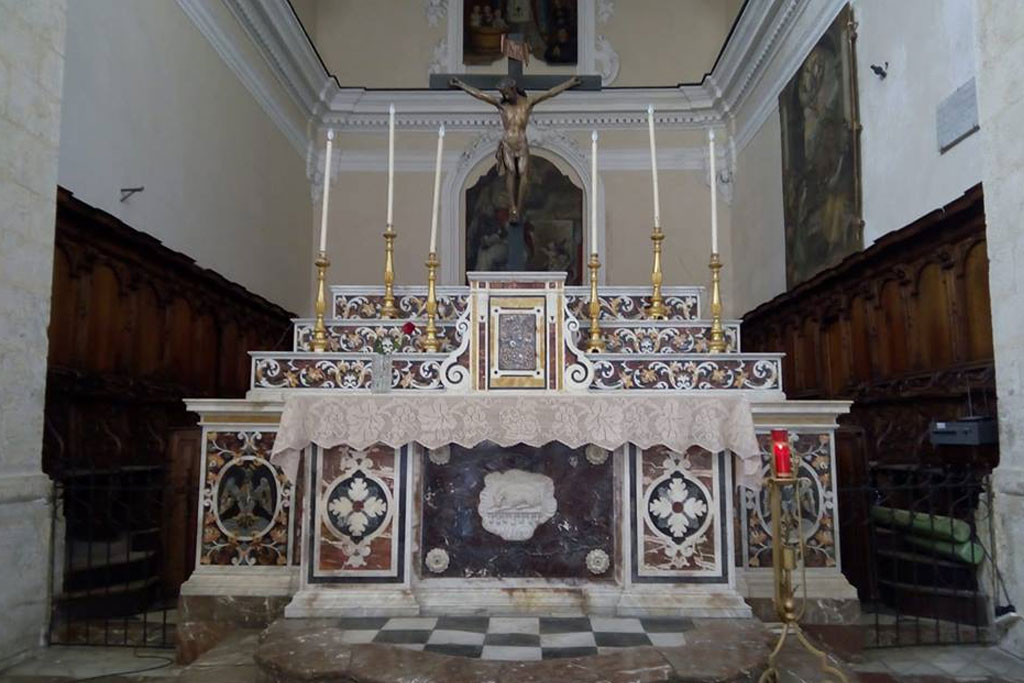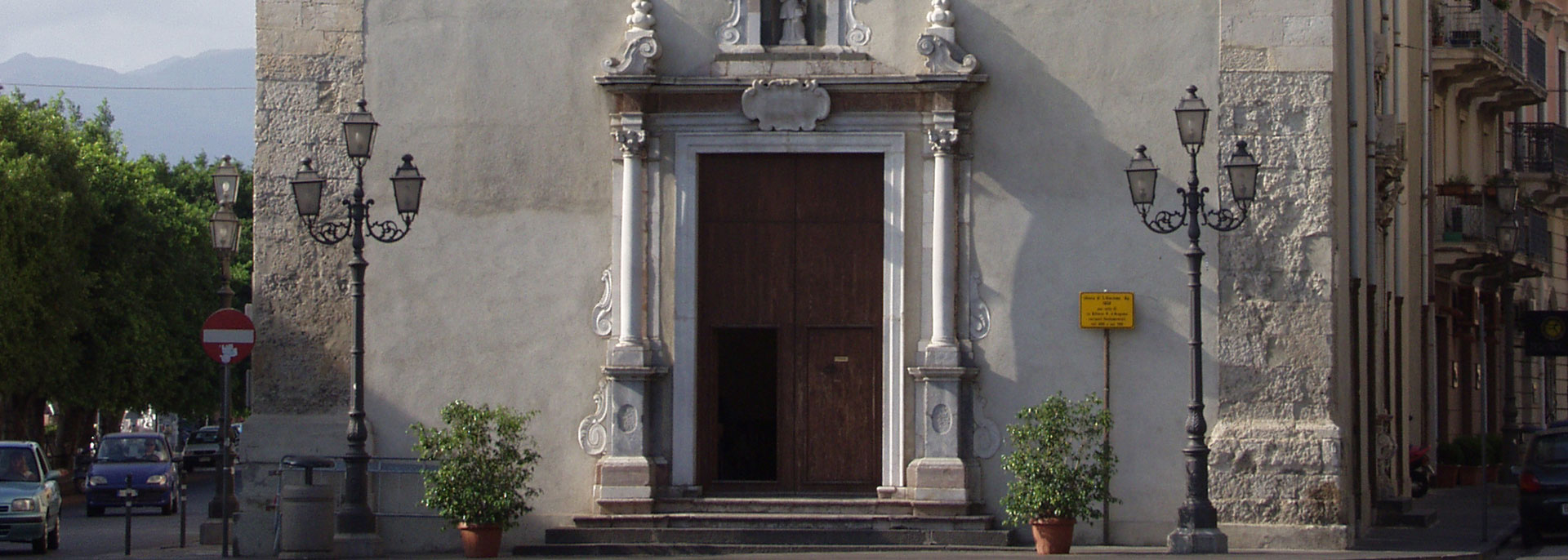It was built in 1434 at the behest of King Alfonso of Aragon following his victory over the troops of Louis III of Anjou, an event that Piaggia believes was invented. Dedicated to St James the Apostle, Patron Saint of Spain, it still retains its original 15th-century structure. It was the city's Mother Church until 1616, when the Cathedral, built inside the Castle, was inaugurated.

Church of Saint James
With a sober Renaissance appearance that has not been altered by later additions, it has a single-order façade tightened by stone cantonments and crowned by a triangular attic with a clock and stuccoes; the door, still in seventeenth-century style, is adorned with slender Corinthian columns and surmounted by a niche with a statuette of the titular saint, all decorated with volutes and scrolls: the inscription dates the construction to 1712. The simple rectangular window is decorated with modest friezes. The secondary door on Via Medici is flanked by elegant Doric pilasters on a decorated base with a broken tympanum enclosing the inscription: a scroll decorated with volutes bears the dedication to the titular saint.
On the Marina side is another opening and the sacristy with a slender neo-Gothic portal. Inside, the original wooden ceiling was replaced by a barrel vault in 1609. It has a single rectangular nave with a large quadrangular choir connected by a triumphal arch, decorated with the civic coat of arms and ornamented with stucco putti lifting a veil. There are four side altars dedicated to the Souls in Purgatory, St. John the Apostle, the Annunciation and the Crucifix;

Some 18th-century canvases attributed to Scipio Manni depicting the Crucifixion, the Annunciation and the Mass of St. Gregory; other paintings in the choir area are the Death of St. Andrew of Avellino, St. Nicholas (1804), St. Anthony the Abbot and the Probatica Piscina (1785). The baptismal font and the wall case of the Holy Oil date back to 1626 and the floor to 1777. In the centre of the vault is a fresco from 1761 depicting The Trial and Martyrdom of St James. The 17th-century high altar is from the former Duomo al Castello, which was moved here in 1866 to replace an ancient wooden altar. In the entrance is the modest Zirilli Proto monument from 1862. Finally, there is the 17th-century crypt below the presbytery area where the remains of numerous Garibaldian fighters of 20 July 1860 and Milazzese patriot Matteo Nardi were buried, transferred in 1864 to the large ossuary of the ancient S. Giovanni cemetery. There is also a hole marked with a circle and a date, 25 July 1943, recalling the temple's prodigious safety during Anglo-American bombing when a bomb broke through the roof and fell unexploded at the foot of the statue of St Stephen Protomartyr.
INDIRIZZO
Church of Saint James Via Francesco Crispi 50, Milazzo (ME)







